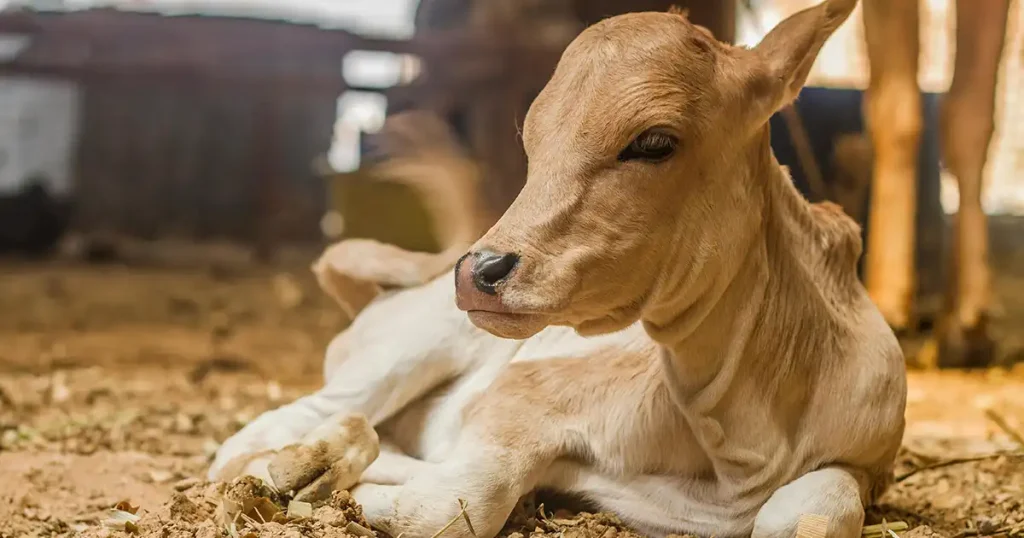Aside from the Bollywood imagery of India as a land of passionate lovers, enchanting musicals, and colorful festivals, how much do you truly know about this incredible nation? Beyond lively dances and romantic songs, there’s more to India than meets the eye. With over a billion people, India’s true beauty lies in its endearing history, diverse cultures, and deep traditions. Here are 15 intriguing facts about India you should know about.
15 Intriguing Facts About India
1. India: The Second-Largest English-Speaking Country
English became prominent in India during the colonial period under British rule, lasting nearly two centuries until independence in 1947. During this time, English established itself as the language of administration, education, and governance. When India became independent, English retained its official status alongside Hindi, making it one of the two official languages of the Indian Union. This choice has had a lasting impact on Indian society, ensuring that English is widely spoken and understood. Today, India ranks as the second-largest English-speaking country, with millions of people using English in their daily lives, education, and professions.
The English language has opened global avenues for Indians in fields like IT, medicine, business, and science, strengthening India’s international relations. India’s linguistic versatility has further contributed to its rise as a powerhouse in global communication, technology, and education. As such, India’s proficiency in English reflects its resilience in adapting colonial influences to benefit its modern progress.
2. A Vegetarian’s Paradise: India’s Plant-Based Majority
India holds the title for the highest number of vegetarians worldwide, with nearly 40% of the population following a vegetarian diet. This inclination toward vegetarianism has deep cultural and religious roots, notably in Hinduism, where abstaining from meat is seen as a way of practicing nonviolence (ahimsa) and respecting all life forms. Many Hindus also believe in the concept of karma, where diet choices are thought to impact spiritual well-being, thus encouraging vegetarianism.
Jainism, another prominent Indian religion, mandates strict vegetarianism, aiming to minimize harm to living beings as much as possible. This cultural practice has made India a haven for vegetarians, with abundant plant-based cuisine and dishes that showcase the country’s vast array of spices and culinary styles. With vegetarianism woven into the social fabric, Indian cuisine is a global favorite for its flavorsome, creative, and meat-free options, exemplifying India’s unique gastronomic culture.
3. The First Diamond-Mining Country in History
India’s relationship with diamonds goes back centuries, making it the world’s first country to mine these precious stones. Since as early as 296 BC, India was famed for its diamond mines, especially in regions like Golconda and the Krishna River delta. These areas produced some of the world’s most famous diamonds, including the renowned Koh-i-Noor and the Hope Diamond. These gems were highly prized and were often gifted to royalty and dignitaries worldwide.
In ancient times, diamonds from India were revered for their supposed mystical qualities, thought to ward off evil and bring prosperity. India’s role in the diamond industry waned over time, but its rich legacy endures in the annals of history, making it a pioneer in the diamond world. The country’s past in diamond mining highlights its longstanding wealth and significance in global trade networks.
4. The Taj Mahal: A Monument Beyond Architecture
The Taj Mahal, one of the New Seven Wonders of the World, is more than just a stunning building; it is a symbol of eternal love. Built by Mughal Emperor Shah Jahan in memory of his beloved wife, Mumtaz Mahal, the Taj Mahal represents the architectural brilliance of the Mughal era. Its beauty lies in the intricate marble inlays, reflecting pools, and detailed symmetry, blending Islamic, Persian, and Indian architectural influences.
Though often mistaken for a palace, the Taj Mahal is actually a mausoleum. Constructed in the 17th century, it has become a UNESCO World Heritage site and a symbol of India’s rich cultural heritage. This timeless beauty, standing beside the Yamuna River, remains an embodiment of love, devotion, and artistic mastery, captivating millions of visitors from around the world every year.
5. Sacred Status of Cows in Indian Culture

In India, cows hold a revered and sacred status that’s intertwined with religious, cultural, and historical significance. In Hinduism, cows are considered symbols of life and motherhood, revered as givers of prosperity, health, and peace. Deities like Lord Krishna, often depicted as a cowherd, further solidify this bond between Hindu culture and cows.
In modern India, this reverence has practical implications, with several states implementing laws to protect cows from harm. The concept of ahimsa, or nonviolence, supports these protections, reinforcing the spiritual and ethical importance of compassion toward animals. The cow’s elevated status in India embodies the values of kindness and respect for all living beings, reflecting the compassionate ideals that underpin Indian society.
6. India as the Tiger Capital of the World
As the habitat of around 75% of the world’s tiger population, India leads the way in global tiger conservation efforts. The nation’s dedication to preserving this majestic species is reflected in Project Tiger, launched in 1973, which established tiger reserves, safeguarded habitats, and implemented anti-poaching initiatives to reverse the rapid decline in tiger numbers.
Through ongoing conservation efforts, India has succeeded in stabilizing and even increasing its tiger population. Today, the country’s rich biodiversity and protected areas provide a safe haven for these big cats. India’s role as the tiger capital of the world underscores its commitment to wildlife conservation and its responsibility as a guardian of one of Earth’s most iconic species.
7. Ancient Origins of Snakes and Ladders

The popular board game Snakes and Ladders, known as “Moksha Patam” in India, originated as a tool to teach moral values and life lessons. In ancient India, this game was designed to represent life’s journey toward enlightenment. The ladders signified virtues like humility and kindness, while the snakes symbolized vices such as anger and greed. Climbing a ladder was akin to progressing in life, while landing on a snake represented setbacks due to wrong actions.
With time, the game evolved and spread to other parts of the world, taking on different forms while retaining its original themes. Snakes and Ladders’ journey from India to global popularity exemplifies the country’s profound cultural impact and its timeless contribution to entertainment and moral education.
8. The Global Pool of Indian Engineers and Scientists
India is renowned for producing some of the world’s brightest minds in science and engineering, with a vast pool of skilled professionals who contribute to technological and scientific advancements globally. Home to prestigious institutions like the Indian Institutes of Technology (IITs) and Indian Institutes of Science (IISc), India nurtures talents who excel in fields ranging from information technology to biotechnology.
Many Indian engineers and scientists have made remarkable contributions, particularly in the technology sector, where they hold key roles in multinational companies worldwide. This pool of talent has fueled India’s reputation as a global hub for innovation and expertise, with Indian professionals driving advancements in diverse fields.
9. Linguistic Diversity: A Nation of Many Tongues
India is one of the world’s most linguistically diverse countries, officially recognizing 22 languages under the Eighth Schedule of the Indian Constitution. Hindi is the primary official language, but the use of English as a significant link language facilitates communication across linguistic divides. According to a 2018 census, over 19,500 languages and dialects are spoken across India, reflecting its vibrant and multifaceted identity.
The diversity of languages in India also reflects the rich history and cultural heritage of its many regions, with each language bringing its own script, literary tradition, and cultural flavor. India’s linguistic landscape makes it a true testament to unity in diversity, a concept deeply ingrained in the national ethos.
10. The Largest Film Producer in the World
India’s film industry, particularly Bollywood, is famous for its vibrant musicals, dramatic storytelling, and elaborate dance sequences. Producing between 1,500 and 2,000 movies annually, India ranks as the world’s largest film producer. While Bollywood dominates global recognition, India’s film industry also includes regional cinemas like Tamil, Telugu, Bengali, and Malayalam cinema, each with its distinct style and cultural influence.
Indian cinema’s international appeal has grown over the years, drawing audiences worldwide and bridging cultural gaps. With stories that range from heartwarming romances to social dramas, India’s film industry is a powerful medium of cultural expression that has captured the hearts of millions globally.
11. The Magnetic Hill of Ladakh: Defying Gravity

Nestled on the Leh-Kargil-Baltic National Highway, the Magnetic Hill in Ladakh creates an optical illusion that fascinates visitors. When a vehicle is parked at a specific spot on the hill, it appears to roll uphill against gravity, although the slope is downhill. This phenomenon occurs due to the surrounding terrain’s layout, which creates a deceptive incline.
This unique illusion has made Magnetic Hill a popular tourist attraction, drawing curious travelers from all over the world. The rugged landscapes of Ladakh and the mysterious pull of the Magnetic Hill combine to offer an experience that’s truly out of the ordinary, embodying the enchanting mystery of India’s natural wonders.
12. India: The Largest Hindu Population in the World
With nearly 81% of its population identifying as Hindu, India has the largest Hindu population in the world. Hinduism, one of the oldest religions, originated in India and has shaped the country’s culture, festivals, and social customs for thousands of years. Hindu practices, rituals, and temples are a vital part of everyday life in India, influencing art, music, and philosophy across the country.
This widespread adherence to Hinduism makes India one of only a few countries, alongside Nepal and Mauritius, where Hinduism is the dominant religion. The presence of iconic temples, like the Venkateswara Temple in Tirumala and the Jagannath Temple in Puri, not only reflects India’s strong spiritual foundation but also draws millions of pilgrims and tourists annually. This deep spiritual connection to Hinduism offers a glimpse into India’s profound cultural heritage.
13. India: The Birthplace of Chess
The origins of chess can be traced back to ancient India, where a game known as “Chaturanga” was played as early as the 6th century AD, although some sources suggest it may date back to the 2nd century AD. Chaturanga, which means “four divisions of the military,” was a strategic board game involving elephants, chariots, cavalry, and infantry—each piece represented an aspect of the Indian military.
This game spread from India to Persia, where it became known as “Shatranj” and later evolved into the modern game of chess as we know it today. The legacy of Chaturanga lives on, as chess has become a beloved intellectual sport worldwide. India’s contribution to the game exemplifies its historical influence on global culture and demonstrates the country’s longstanding emphasis on strategy, intellect, and competition.
14. India and Angkor Wat: A Monumental Link
Angkor Wat, the largest religious building in the world, was originally built as a Hindu temple dedicated to Lord Vishnu. Located in Cambodia, this monumental structure was constructed in the early 12th century by the Khmer King Suryavarman II. Though it is not physically located in India, Angkor Wat’s Hindu roots highlight India’s cultural influence across Southeast Asia, where Hinduism and Indian architectural styles spread during ancient times.
The temple’s design, sculptures, and iconography bear strong Indian influences, with depictions of Hindu deities and mythological scenes. Angkor Wat serves as a testament to India’s far-reaching cultural impact and the enduring legacy of Hinduism. Over the centuries, the temple has become a cultural symbol for both Cambodia and Hindu heritage, drawing millions of visitors to its hallowed halls each year.
15. The World’s Highest Cricket Ground in Chail
Nestled in the picturesque hills of Chail, Himachal Pradesh, India boasts the world’s highest cricket ground, situated at an altitude of 2,444 meters (8,000 feet) above sea level. Constructed in 1893 by Maharaja Bhupinder Singh of Patiala, this cricket ground was created after leveling a hilltop, part of his ambitious plan to make Chail his summer capital.
Though it may not host major international cricket events, the Chail Cricket Ground stands as a unique attraction, symbolizing India’s deep-rooted love for the sport. Cricket enthusiasts from around the world visit this site to witness its stunning mountain views and remarkable history. The ground is a reminder of India’s passion for cricket and its ability to celebrate the sport in even the most remote and scenic locations.
16. India’s Expansive Postal Network: Largest in the World
India’s postal network, with over 154,965 post offices as of recent years, is the largest in the world. This extensive network covers rural, urban, and remote areas, ensuring postal services are accessible across the country, even in its most isolated regions. Established during the British colonial era, India’s postal system has a legacy dating back to 1774, when the East India Company opened the first post office in Kolkata.
In addition to mail delivery, India Post offers a variety of financial services, including savings accounts and money transfers, especially for rural populations. The postal network’s scale and reach exemplify India’s commitment to communication and connectivity, playing an essential role in the lives of millions of Indians.
17. Mawsynram: The Wettest Place on Earth
Recognized by Guinness World Records, Mawsynram in Meghalaya holds the title of the wettest place on Earth, with an average annual rainfall of around 11,873 millimeters (467.4 inches). This intense rainfall is largely due to the southwest monsoon, which brings heavy rains to the region from June to September. The unique topography of Mawsynram, surrounded by hills, traps moisture-laden clouds, leading to prolonged and intense rainfall.
The people of Mawsynram have adapted to the heavy rains, using specialized building techniques to withstand the harsh monsoon season. The village has become a destination for tourists who want to experience the phenomenon of constant rain, adding to the charm and allure of India’s varied natural landscapes. Mawsynram’s extraordinary climate illustrates the diverse geography and weather patterns that make India’s ecosystem so remarkable.
18. The Only Country with an Ocean Named After It: The Indian Ocean
India is the only country in the world with an entire ocean named after it—the Indian Ocean. Stretching across three continents, the Indian Ocean has been central to India’s history, facilitating trade and cultural exchange with Africa, the Middle East, and Southeast Asia. This ocean has played a significant role in India’s maritime history, helping shape its identity as a crucial hub in global trade routes.
The Indian Ocean has witnessed centuries of trade in spices, textiles, and precious metals, contributing to India’s wealth and cultural influence. India’s connection with this vast water body has fostered economic prosperity and helped it establish itself as a dominant presence in the region. The Indian Ocean is thus a symbol of India’s rich maritime legacy and its integral role in global history.
19. Tirumala Venkateswara Temple: A World-Famous Pilgrimage Site
The Sri Venkateswara Temple in Tirumala, Andhra Pradesh, is one of the most significant pilgrimage destinations in India. Dedicated to Lord Venkateswara, a form of Lord Vishnu, this temple attracts millions of devotees every year, making it one of the most-visited holy sites globally. Built in the 10th century AD, this temple complex has grown in scale and prominence, with daily footfalls often exceeding 100,000 devotees during peak times.
The temple’s popularity highlights the depth of India’s religious culture, with pilgrims traveling from across the country and around the world to seek blessings. The traditions, rituals, and architecture of the Tirumala Temple exemplify India’s enduring devotion to spirituality and its commitment to preserving its sacred heritage.
20. London Hosts More Indian Restaurants Than Mumbai or Delhi
Surprisingly, London has more Indian restaurants than major Indian cities like Mumbai or Delhi. Indian cuisine has become an integral part of British culture, and the popularity of dishes such as chicken tikka masala, naan, and samosas is undeniable. Indian chefs and restaurateurs have introduced authentic flavors to the UK, adapting dishes to local tastes while preserving traditional spices and cooking techniques.
The Indian restaurant scene in London has evolved to offer everything from street-style snacks to fine dining experiences, reflecting the diversity of India’s culinary heritage. This culinary presence exemplifies India’s cultural influence abroad and how Indian food has become a beloved staple worldwide, connecting people to the tastes of India regardless of location.
You may also like:
- 20 Interesting Proud Facts About India
- 20 Incredible Facts About Indian History
- 20 Great Indian Discoveries & Inventions
- 20 Amazing Facts About India
Conclusion
These intriguing facts about India showcase a country of vast diversity, rich history, and deep cultural significance. From being the birthplace of games like chess to leading in tiger conservation, India has made unparalleled contributions to world heritage. India’s unique characteristics—like its linguistic diversity, spiritual depth, and remarkable geographical features—make it an endlessly fascinating place. These intriguing facts about India remind us of the country’s far-reaching impact, inviting us to explore, understand, and appreciate all that this extraordinary nation has to offer.



